How to remove oil from clothes?

Everyone has a risk of planting a stain on a jacket or suit. With the expansion of the range of application of various chemicals, pollution on clothes is becoming more difficult to wash. Sometimes it's hard to guess what kind of substance left a mark on your clothes. Oil stains are some of the most difficult to remove. But there is always a way out. Many home remedies can be used to remove oil stains: salt, soda, alcohol, ammonia, toothpaste, dishwashing liquid, soap, flour, and even mustard. Of the stronger formulations, gasoline, kerosene, solvents, acetone are applicable. The stores have a wide range of stain removers of different compositions and purposes.

Types of pollution
In order to remove oil contamination as quickly and safely as possible, you need to understand what type of oil you are faced with.
Sunflower oil is the most common source of greasy stains. Going out in the kitchen, dining in a restaurant, or snacking on a hamburger on the go can stain your clothes. Store-bought stain removers do not always guarantee a good result. Therefore, it is worth resorting to some folk remedies for removing stains:
- Laundry soap is the most common remedy for plant fats. Lather it with a cloth and soak it for a day. After that, you should rinse the thing.
- You can add sugar to laundry soap. Rub the soap over the affected area and apply a layer of sugar. It is better to additionally clean the dirt with a brush and leave the composition on the surface for 20 minutes. Then be sure to wash the item in the usual way.
- Salting is an easy way to remove sunflower oil. It is necessary to apply a layer of it to the surface and let the excess fat pick up.To enhance the effect, you can iron this area with a hot iron through a sheet of white paper. The temperature will cause the salt to absorb the stain more quickly.
- Treatment with dishwashing liquid: apply a small amount of detergent to the dirt and rub with a napkin or soft brush. Rinse clothes after 15 minutes.
Mustard powder should be mixed with water and the resulting paste should be spread over the surface to be treated. Let the product dry and remove residue with a brush or knife. Then wash your clothes as usual.

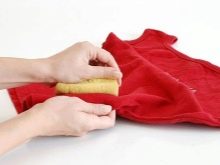
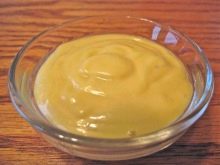
Vaseline is used in cosmetology and for caring for newborns. Removing petroleum jelly from clothes is not easy. To do this, you can use gasoline. Apply the product to a cotton swab and treat the stain with it, then sprinkle with talcum powder. When the stain is dry, remove any remaining powder with a scraper or stiff brush.
During processing, it is worth placing a clean white cloth under the product. If there are traces of contamination, they can be cleaned with an aqueous solution of oxalic acid. Use a napkin soaked in the solution to wipe the stain and rinse the fabric.
It is very difficult to remove the lamp oil from the fabric. It is worth using a strong commercial stain remover with organochlorine. An interesting way of aerosol treatment WD-40. Place a cardboard sheet over the layers of soiled and clean clothing. This will protect the clean areas of the fabric from excess exposure to chemicals and oil residues. Then spray the contaminated area with an aerosol.
Then apply a generous amount of baking soda to the affected area. Use a soft bristled brush to rub it into the fabric. When it starts to roll into lumps, stop rubbing and remove any remaining soda powder. If the baking soda remains on the surface, then with the first wash it will be removed without problems. Oil stains should be treated with dishwashing liquid. At the end of all these manipulations, it will be enough to wash the thing as usual.
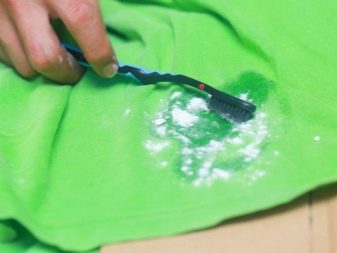
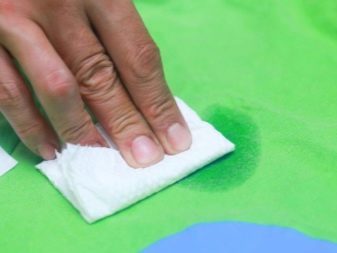
Castor oil is very fatty in structure. It is used in medicine and cosmetology. This kind of oil stain can be removed with chalk. Grind it to a powdery state, sprinkle on clothes on each side and transfer to paper sheets. Place a heavy object on the paper and let it soak overnight. Then remove the remaining chalk from the piece. But for dark things, you need to powder the wrong side.so as not to spoil the thing.
The scope of application of flaxseed oil is huge - medicine, pharmacology, cosmetic and food industries, furniture production. It is absorbed into clothing very strongly. Yellow-brown spots appear. But this is not the only thing that makes removing flaxseed oil traces problematic. After its exposure, a persistent smell of drying oil remains. The best stain removers in this case are gasoline products.
Gasoline should be applied to the surface, on top of it, treat the place of contamination with a cloth soaked in benzene. Then rub petrol soap into the cloth and remove with petrol. The remaining traces of oil must be removed with talcum powder. If after all the manipulations the stain is not completely removed, then you need to additionally treat the surface with gasoline soap and leave to soak for a day.
Garments should be thoroughly washed and rinsed after using gasoline to remove odors. It is better to pre-rinse things in a basin, and then wash in a machine so that there are no traces of oil products and their smells left in it.
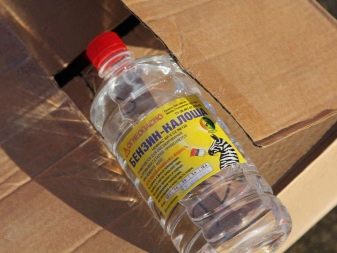
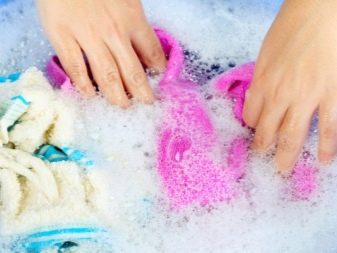
In rare cases, technical oil formulations can stain household clothes. Unless you are repairing a sewing machine or lubricating the hinges with a special compound. In the garage or at work related to car repairs, there is a danger of getting contaminated with gear oil. Transformer, hydraulic oil can be put on clothes at work in the power industry or at a pumping station.Of course, professionals at work are provided with workwear that does not need to be washed to perfect condition. But there are situations when it is still necessary to remove technical oil from the surface. It leaves clear brown marks on the fabric. Due to their strong viscosity, the formulations are very firmly embedded in the material.
Laundry soap and Fairy can help here, as can store-bought stain removers, but you can use refined gasoline or kerosene. It is necessary to apply the liquid to a cloth or cotton wool and wipe the dirt from the edges to the middle. This will prevent the oil from spreading over a larger surface. After processing, machine wash the item. The second method is to prepare a mixture of ammonia and turpentine, taken in equal proportions. Treat the area of contamination and let it soak for 15-20 minutes. After that, it is better to rinse the clothes separately to eliminate persistent odors, and only then wash them in the machine.
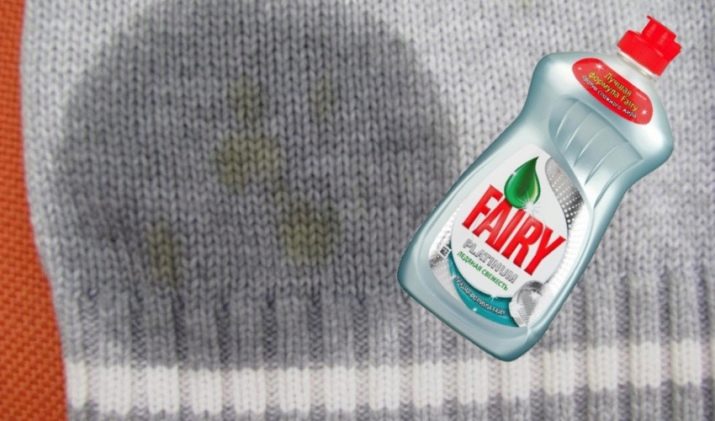
We clean different types of fabrics
The specifics of the materials from which your clothes are made makes it necessary to consciously choose a means of oil remover.
Synthetics absorb dirt less. It will be easier to wash clothes from it. Store-bought stain removers may be enough. You can also act on dirt with an iron heated to a low temperature. Iron the thing through the paper, into which the dirt is absorbed.
Try to remove things made from natural materials (cotton, linen, silk) with chalk powder. Spread it over the surface of the dirt, rub in and leave for a few hours. Then the remnants of the product must be removed and the clothes must be machine washed as usual.
Delicate fabrics require a special approach, because they cannot be rubbed with abrasive powders and brushes. It is also desirable to exclude various solvents. Glycerin will come to the rescue. It is combined with ammonia in a ratio of 1 to 1 and the damaged area is soaked in the resulting solution. After that, you should wash the item in lukewarm water with your hands.

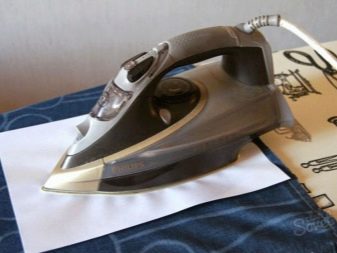
White linen and clothes can be treated with oxygen bleach. You can soak the garment in it for a long time, but remember that bleaches negatively affect the durability of the fabric. Soda will also work well on light colored items. Make a paste of equal parts baking soda and water and apply to the stain. The solution should be allowed to work for 10-15 minutes and removed with a damp cloth. Another way is to use a plumbing cleaner. It is poured onto a fabric and rubbed with a brush. Then remove with a wet cloth or sponge. Toothpaste, due to its whitening properties, can also help. Spread it over the stain, leave it on for 15 minutes and rinse it off with plain water.
Outerwear requires special frugality. A bologna jacket can be washed with most of the above methods. A safe way to treat it is with vinegar. Apply it on dirt, and then wash things. Leather products can be cleaned with rubbing alcohol.
Denim is very oil-absorbing, so you need to get rid of the stain as soon as possible. In this case, you can use chalk, starch, or dishwashing detergent.
If the stain is already dry, try soaping the fabric with laundry soap and letting it sit for 12 hours, then wash.
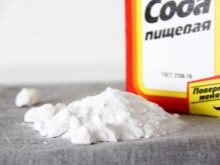

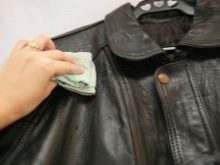
Shampoo for oily hair will help remove traces of vegetable oils at home. Pour it over the stain and let it sit for an hour. Then rinse the items. Engine oil stains can be treated with a mixture of turpentine and ammonia. Treat the damage with a cloth with a cloth and let the material soak for 3 hours. Then wash the product as usual.
It is always easier to remove fresh dirt. Once the stain has formed, blot it with a tissue to remove excess oil. Newly formed dirt can be treated with powders with good absorbent properties - soda, chalk, baby powder, salt.
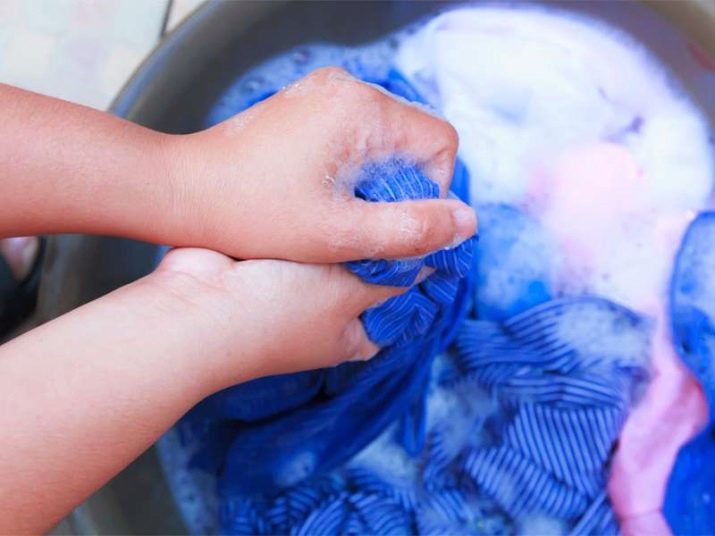
It can be very difficult to remove old stains, and sometimes impossible without a trace. Therefore, if the fabric is delicate or the item is expensive, it is better to use dry cleaning services. In any case, it is necessary to resort to strong chemicals.
Gasoline, acetone, solvents must be applied carefully. If the fabric is tricky, it is best to remove stubborn dirt from the wrong side. The dried spot is removed with glycerin. A little solution is applied to the surface, left to absorb and moisten for half an hour, and then removed with a damp cloth or cotton swab.
The all-in-one remover for greasy oily stains - home stain remover... Combine 20 ml of gasoline, 30 ml of ammonia, 60 ml of alcohol and treat the contamination with this mixture. Leave the mixture on for half an hour, then wash your clothes.
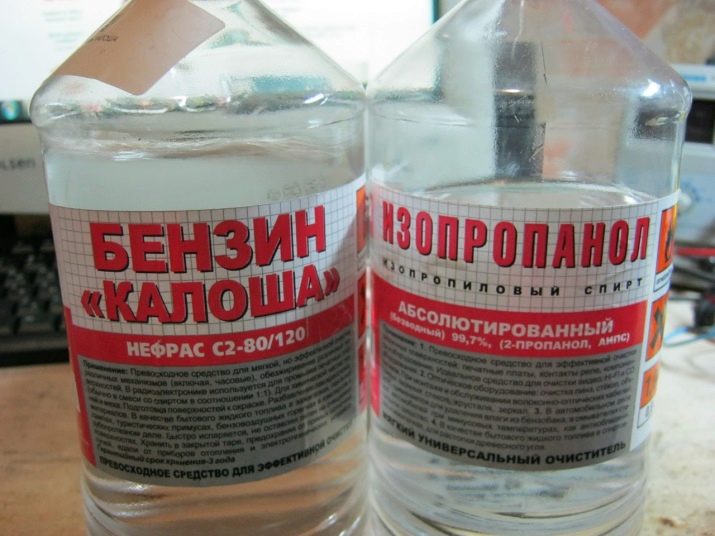
How do I wash my shoes?
Shoes, as a rule, cannot be washed and strongly exposed to water. Therefore, for her at home, the range of possibilities is not so great.
Leather boots can be wiped off the oil with dishwashing liquid. Another proven recipe is a mixture of 100 ml distilled water, a tablespoon of sea salt, half a teaspoon of flour, and 1 tablespoon of baking soda. All this must be combined and carefully moved until a homogeneous consistency. Using a cloth napkin, treat the damaged area with this compound. You need to wait 15-20 minutes, then remove the mixture with a clean cloth.
Suede requires delicacy in processing. Try river sand. It is necessary to heat it in a frying pan and place it in a cloth bag or sock made of natural light-colored material and apply it to the dirt. Wait until the stain is absorbed or the contents of the bag have cooled. The procedure must be repeated until the stain disappears. In the same way, you can remove oil with salt.
Another option for suede shoes is to combine liquid soap with ammonia in a ratio of 1 to 1. Create a foam and dilute the mixture with warm water. Using a sponge, apply the product to the dirt and let it absorb. Then remove the remaining liquid and leave to dry.
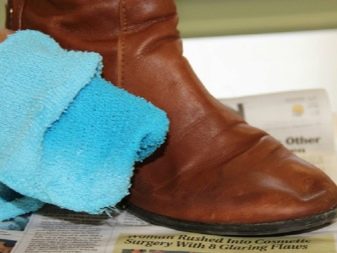
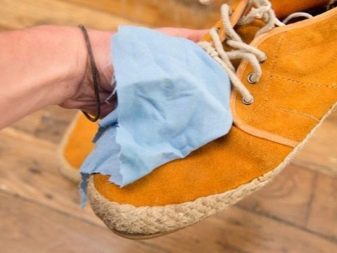
Suede and leather footwear can be cleaned using special compounds sold in specialized stores.
Tips & Tricks
A few tips for housewives:
- It is better to remove the stain immediately, before it is absorbed and dried.
- Wear gloves to avoid damaging your skin with strong compounds.
- Examine labels on clothes to avoid ruining them.
- If you are not confident in your abilities, it is better to contact a dry cleaner.
- After processing oil traces, it is better to pre-rinse the item in a basin. This will prevent the washing machine from smelling like oil and solvents.
- If you are unsure of the composition of your fabric, it is best to choose a gentle cleaning method.

For information on how to remove stains from various types of oil, see the next video.








